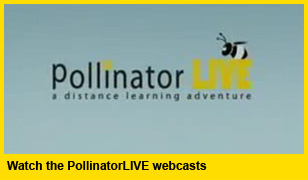Lesson Plans
The lesson plans were aligned to the former National Science Education Standards. For the Next General Science Standards, go to http://www.nextgenscience.org/next-generation-science-standards.
- For a correlation of the lesson plans to the National Science Education Standards for Kindergarten through Grade 4, CLICK HERE.
- For a correlation of the lesson plans to the National Science Education Standards for Grades 5 – 8, CLICK HERE.
- For a correlation of the lesson plans to the National Science Education Standards for Grades 9 – 12, CLICK HERE.

Grades PreK – 3
Grades K – 12
Grades 1 – 6
Grades 3 – 6
Grades 3 – 8
Grades 6 – 8
Other Lesson Plans
Grades PreK – 3
Here Come the Sunflowers!
Smithsonian Institution
http://forces.si.edu/ltop/pdfs/PreK-1-HereComestheSunflower.pdf
Students will have an opportunity to learn about sunflowers and plant sunflower seeds, a native plant of the North American prairie.
Grades K – 12 
Africanized Honey Bee Education Project
University of Arizona
http://ag.arizona.edu/pubs/insects/ahb/
Africanized honey bees have moved into the Southwest and are here to stay. In addition to the safety issues that need to be addressed because of the defensiveness of these bees, honey bees are also fascinating subjects to study. These lesson plans were developed to familiarize students with honey bees and bee safety issues through a variety of interesting activities.
Grades 1 – 6
Moth Moonflower Pollination Game
Clemson University
CLICK HERE for the pdf file
In this activity, students will become hawkmoths and attempt to collect nectar and pollen from flowers while avoiding becoming prey to the predators lurking in the garden. They will investigate the proboscis of the moth as an adaptation allowing it to feed and survive. They also will investigate ways living things interact with each other in the nocturnal garden.
Sowing Seed of Learning: Establishing and Using Outdoor Classrooms for K-5 Science Education
Prince William County (Virginia) Public Schools
CLICK HERE for Word file
This curriculum provides lessons to engage students in meaningful outdoor experiences that meet education standards. Research has shown that well-executed outdoor education raises student achievement in all content areas, enhances character development, reduces disciplinary problems, and improves student attendance. An outdoor classroom, also sometimes referred to as a schoolyard habitat or community restoration project, is a space set aside for the development of natural habitats in which students and community members can learn about science and the outdoors through a hands on experience. Although most of what is done in an outdoor classroom relates to science, it is also an interactive opportunity for students to learn about math, language arts, social studies, art, and music.
Grades 3 – 6
Exploring the Native Plant World (Grades 3 - 4)
Lady Bird Johnson Wildflower Center
CLICK HERE for the pdf file
In this unit of Exploring the Native Plant World, students build on their knowledge of what plants must do to survive. Plants need certain ingredients to make food, and they need their friends and partners. Plants have evolved ways to defend themselves, strategies to ensure the survival and continuation of their species, and ways to fit into their habitats. This curriculum has five lesson plans and 25 activities.
Pollination Parade
Project Seasons, Shelburne Farms
CLICK HERE for a pdf file
Students explore the relationship between plants and their pollinators. As an extension, have students conduct a pollination survey observing a flower over time noting the different types of pollinators and behavior of pollinators that visit it.
Pollination Parties!
Discovery Education
http://school.discoveryeducation.com/lessonplans/programs/tlc-butterflies/
Students will: understand the pollination process and show examples of bee pollination on specific plants and understand the interdependence between insects, plants, and humans.
Grades 3 – 8
Plants and Animals: Partners in Pollination
Smithsonian Center for Education and Museum Studies
https://learninglab.si.edu/collections/plants-and-animals-partners-in-pollination/er3GDtc6Mx03gqrB#r
Ultimately, all life on Earth depends on plants to provide food, shelter, and oxygen for other living things. Consequently, plant reproduction is crucial to all other life on this planet. The first step in plant reproduction is the intricate process called pollination, which occurs when pollen grains, the male germ cell of a plant, reach the stigma, the female reproductive part of the same species of plant. Depending on the plant species, a flower can produce male, female, or both structures. Pollination can also occur within the same flower.
Most flowering plants (90 percent) depend on animals to make the vital pollen-grain delivery. The remaining flowering plants rely on wind and some-times splashing raindrops to ferry pollen, but this is a less precise method. Pollinating animals do the job for a reward: food, usually in the form of nectar.
Lesson Plan 1 http://www.smithsonianeducation.org/educators/lesson_plans/partners_in_pollination/lesson1_main.html objectives include: identifying the plant parts involved in reproduction; identifing the animal (bee) structures involved in pollination; and demonstrating how pollen moves from the male stamen to the female stigma.
Lesson Plan 2 http://www.smithsonianeducation.org/educators/lesson_plans/partners_in_pollination/lesson2_main.html objectives include interpreting the links between pollination and food production.
Lesson Plan 3 http://www.smithsonianeducation.org/educators/lesson_plans/partners_in_pollination/lesson3_main.html objectives include describing the complementary relationships between pollinators and the plants they pollinate and identifying adaptations that flowers have developed to "encourage" pollination.
Build a Crawling Insect!
Blandy Experimental Farm & The State Arboretum of Virginia
CLICK HERE for a pdf file
Students will learn the basic characteristics of insects by discussing and building their own “crawling” insects.
Grades 6 – 8
The Blossoming of Flower Power
New York Times
http://learning.blogs.nytimes.com/1999/08/03/the-blossoming-of-flower-power/
In this lesson, students explore the reproductive functions of flowers by participating in a flower dissection lab.
Plant Pollination
Discovery Education
http://school.discoveryeducation.com/lessonplans/programs/plantpollination/
In this lesson, students will identify the different parts of a flower and understand their functions and understand the importance of pollen for plant reproduction and diversity.
Other Lesson Plans
There is an excellent list of education resources about pollinators at:
http://www.agpollinators.org/source_docs/educational_materials_appendix.pdf
